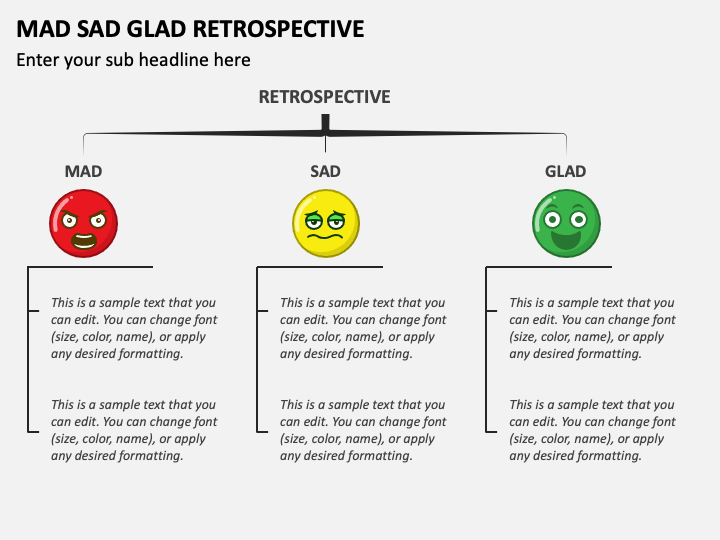
Mad Sad Glad Retrospective PowerPoint Template and Google Slides Theme
Mad Sad Glad is a classic exercise that you can use in your agile retrospectives. It helps teams to look for things that make them happy, sad, or drive them mad, and to decide how they want to address these things working together as a team. The Mad Sad Glad retrospective is described in the book Agile Retrospectives: Making good teams great; a.

Sprint Retrospective Formats for Agile Teams [Retro Formats]
The mad sad glad retrospective frames discussion around the emotional journey of by your team during the previous sprint, and is a great way to identify opportunities to improve team morale and job satisfaction.
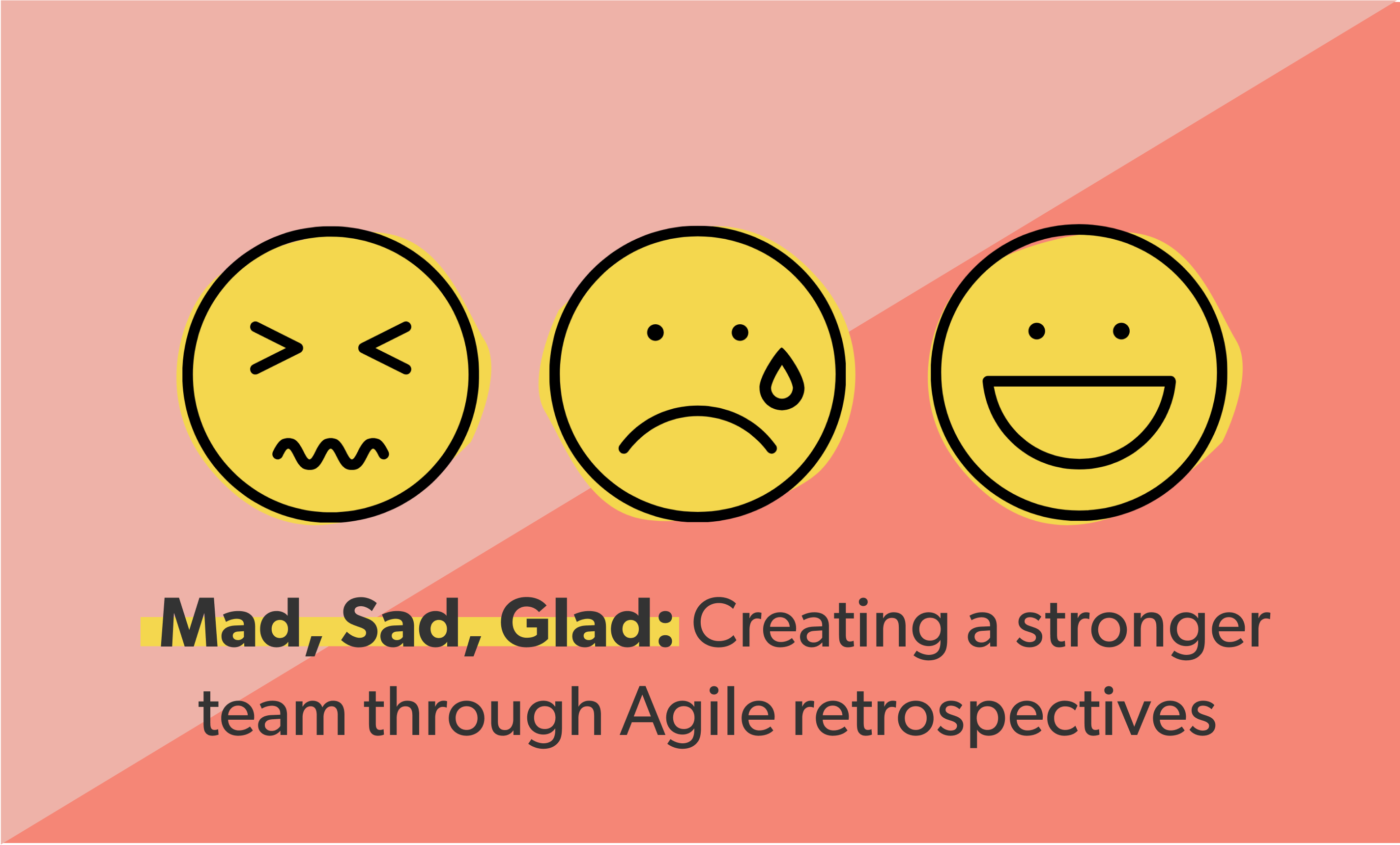
Mad, Sad, Glad Creating a stronger team through Agile retrospectives Wicket
With the Mad, Sad, Glad Retrospective template, you can: List out things that made your team happy, sad, or drove them mad, and collaboratively decide what you want to continue doing and what you should change. Encourage your teammates to share their opinions and emotions as well as find a way to improve team morale and create a more positive.
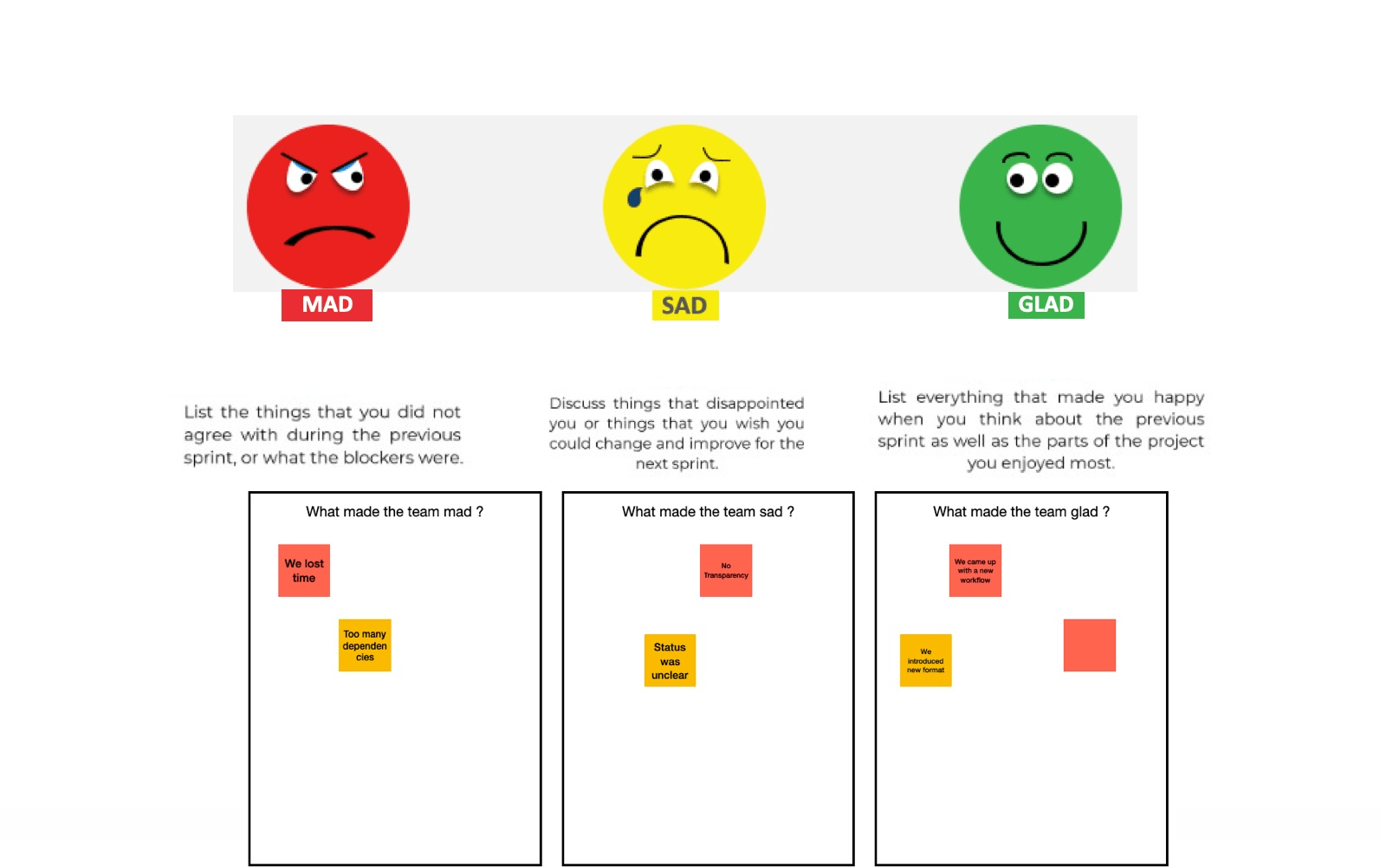
Mad Sad and Glad Sprint Retrospective Tech Agilist
Mad Sad Glad is a classic exercise that encourages team members to consider ways to improve morale and create a positive, safe environment. While "old school" corporate practices might have promoted hiding your emotions at work, this retrospective exercise gives agile teams the opportunity to let them fly!
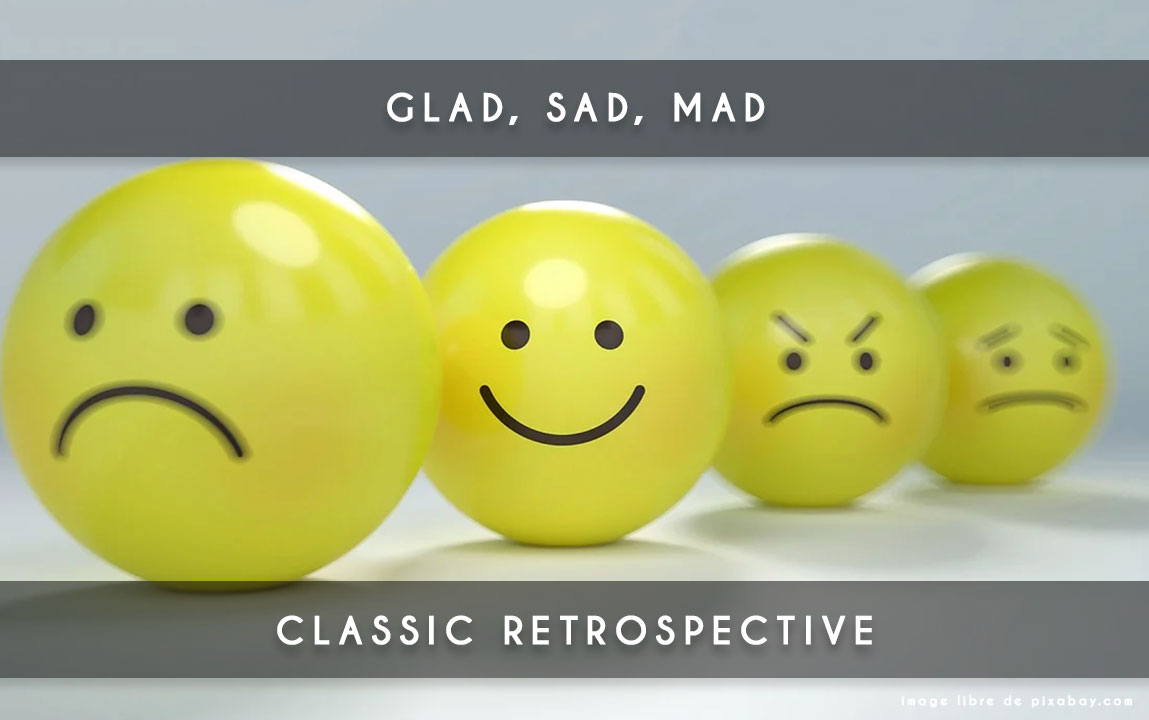
glad, sad, mad retrospective My agile Partner Scrum
Mad, Sad, Glad retrospective is super simple that you can whip out with any team, at any time, with minimal preparation. Not only is this a great retrospective for co-located teams, but this activity can easily be facilitated with remote teams without too much technological wizardry. Tools Required. Whiteboard and markers (or a digital alternative)
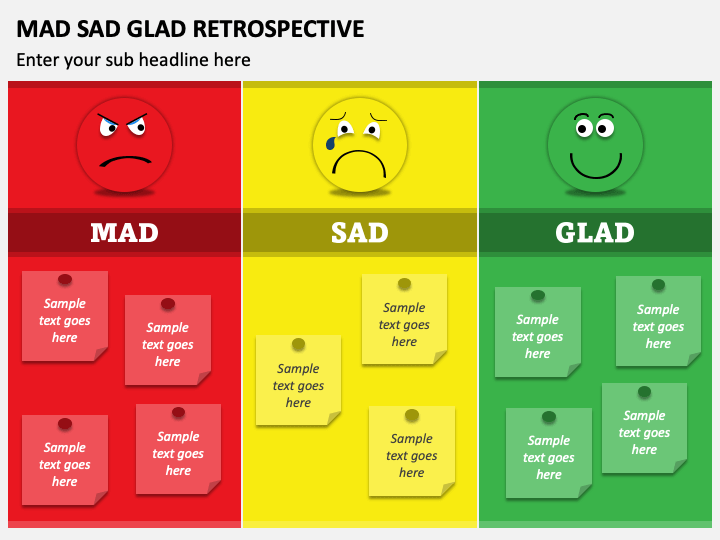
Mad Sad Glad Retrospective PowerPoint Template and Google Slides Theme
A Mad Sad Glad retro is a classic retrospective technique that can help teams discover tensions in the way they work. Running one of these retrospective meetings will help you locate where the stress of team members is creating rough patches in your process. This retrospective can help you: Establish healthy team dynamics Improve team morale
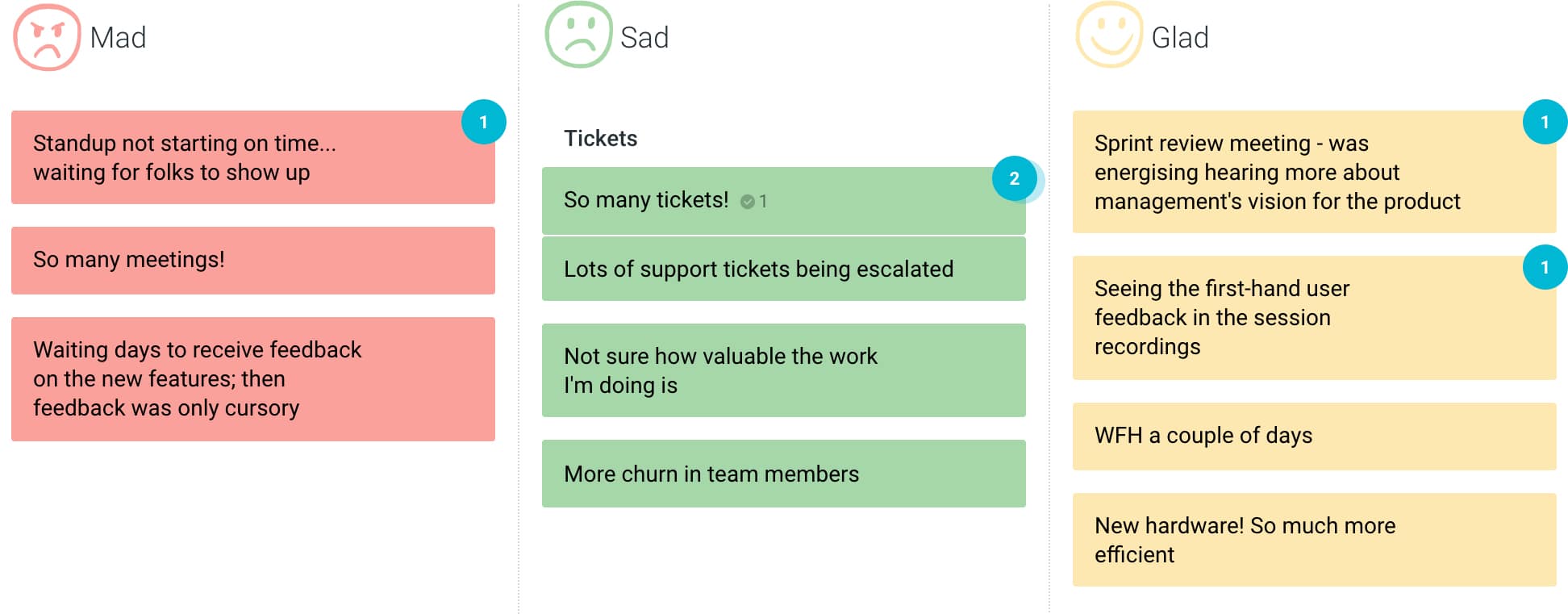
What is a Mad Sad Glad Retrospective? TeamRetro
The Sad category refers to any activities that made team members sad, disappointed, miserable, pessimistic, despondent, or discouraged. While these tasks may not be inherently bad, they slow or arrest productivity. Low spirits have a tendency to progress into further tasks or sprints, hindering the project long-term.

Glad, Sad, Mad Rétrospective 16 My Agile Partner Scrum
Mad Sad Glad is a popular technique for examining your team member's emotions and encouraging them to think about how they feel. You can use the retrospective to highlight the positive feelings your team might have after a Sprint, but also to underline concerns or questions they might have going forward.
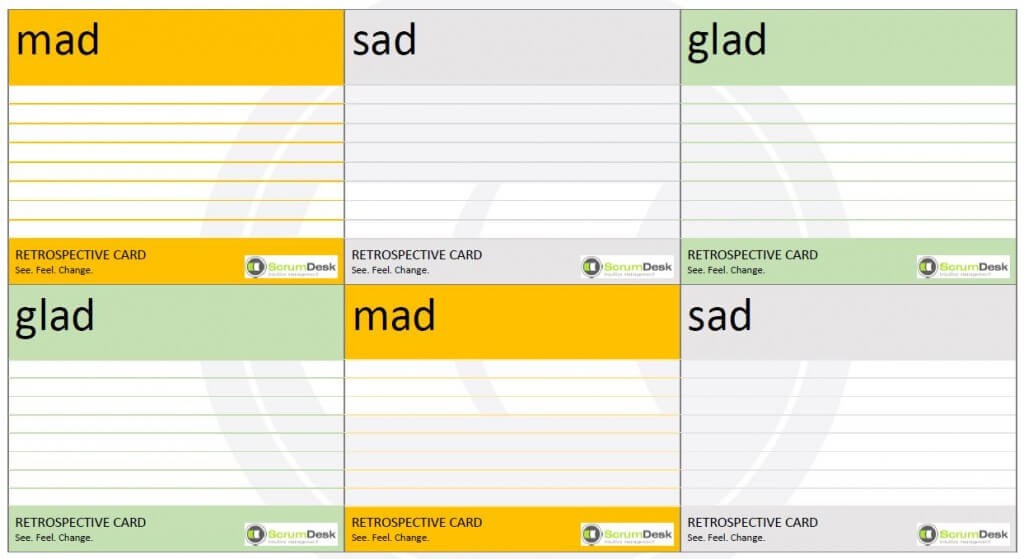
Retrospective Technique Mad Sad Glad ScrumDesk, Meaningful Agile
What is a Mad Glad Sad retrospective? Using the Cacoo Mad Sad Glad template, your team will look back on the sprint or project that you've all just finished together. The gist of this exercise is that you'll find points of the process that made you (individually or as a team) mad, sad, or glad. Mad: what makes you upset?
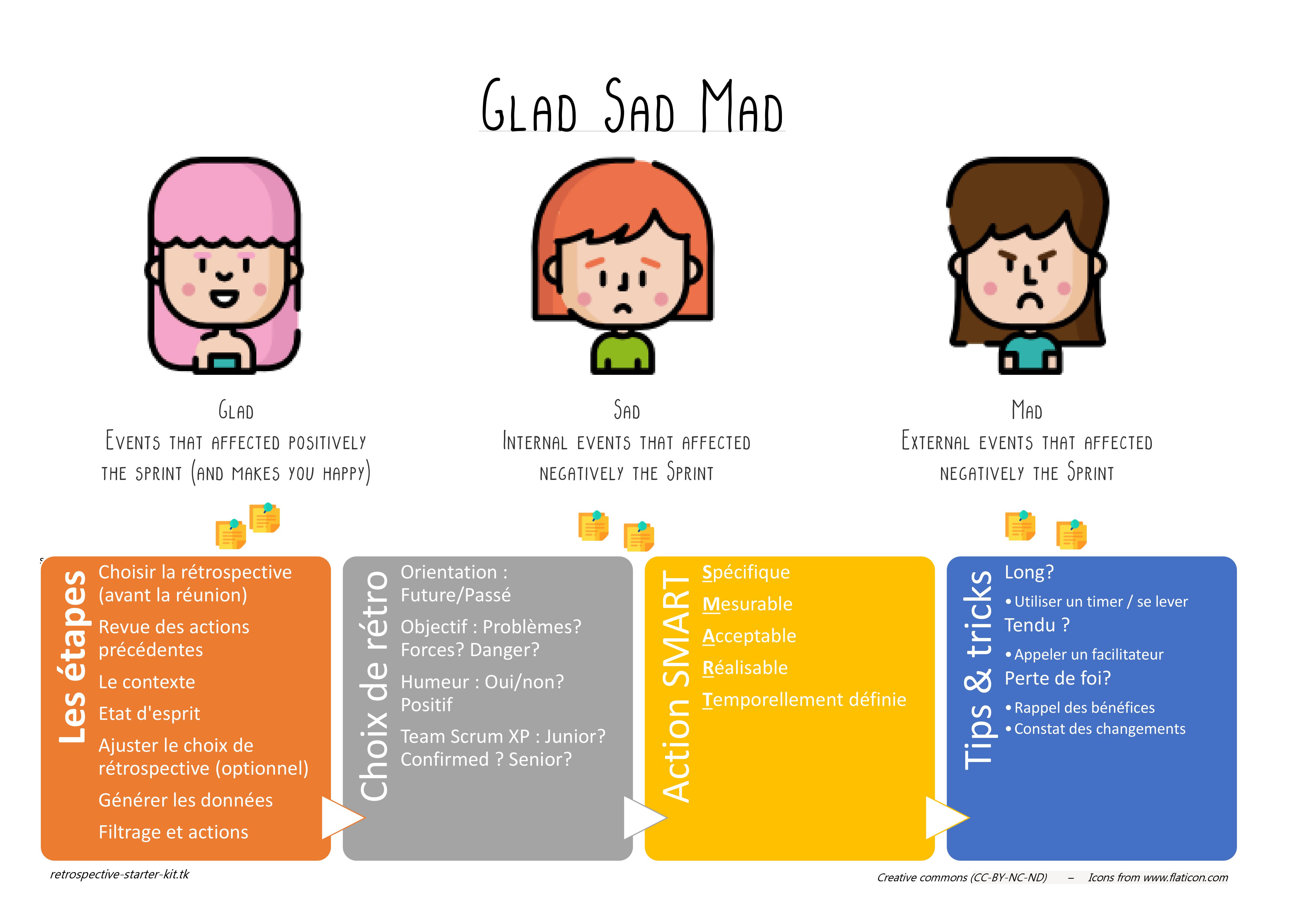
Retrospective Starter Kit
Templates Updated on: 7 months ago The Mad, Sad, Glad retrospective in 4 easy steps with a free Template A typical retrospective is all about reflecting on past performance and identifying areas of improvement. Best practices for running retrospectives include focusing on facts and avoiding letting emotions get in the way of an unbiased appraisal.
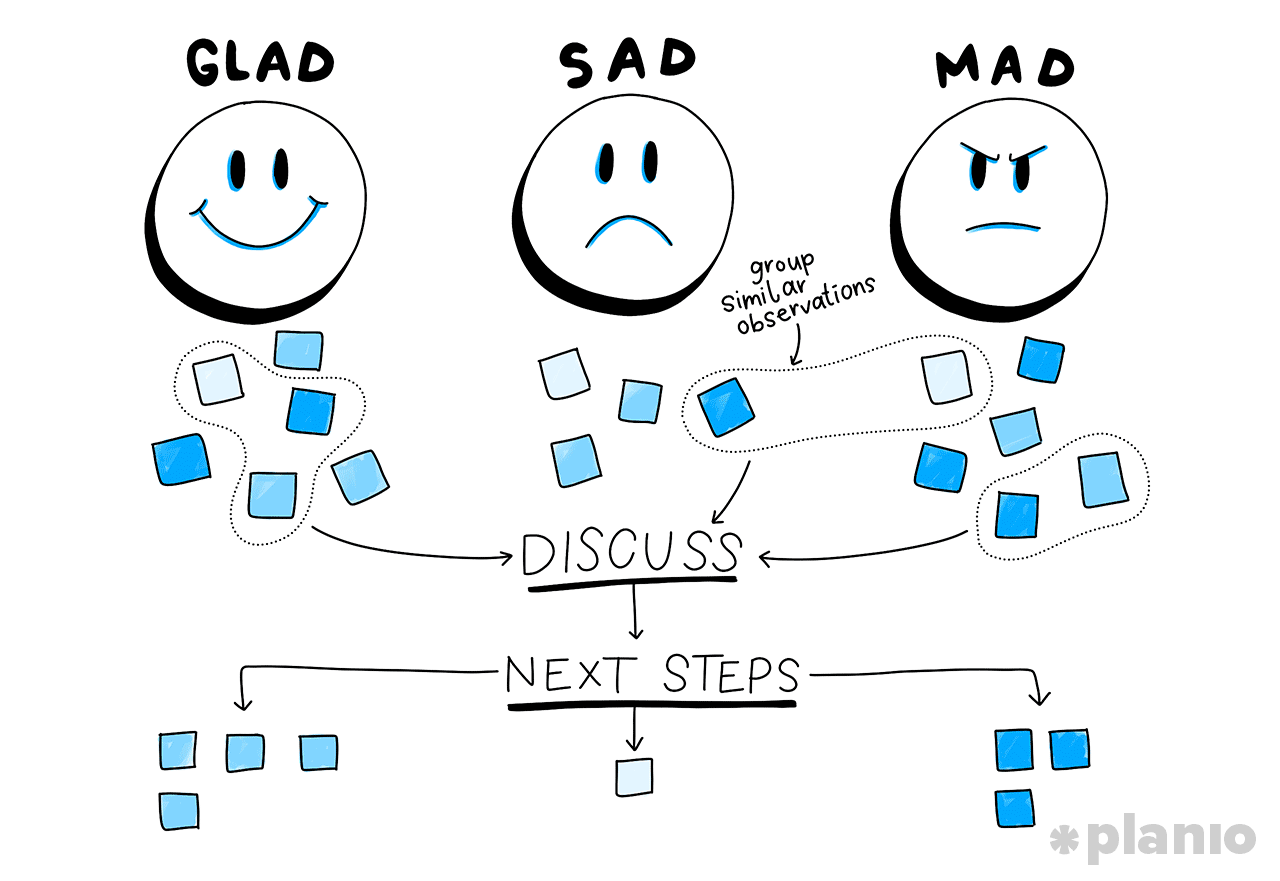
How to Run An Effective Sprint Retrospective (Plus 7 Examples and Templates) Planio
The Mad Sad Glad is a retrospective that differs from the other agile retro techniques. In reality, it is a method that asks team members to recount their emotional journey during the sprint. Therefore, the finished graph shows what made each individual mad, sad, and glad. In more detail, the Mad Sad Glad template includes the following columns:

Retrospectiva de Mad Sad Glad y ejemplos gratuitos Miro
A Mad, Sad, Glad Retrospective is a framework that teams use to reflect on their past project or sprint. Participants categorize their thoughts and experiences into three emotional buckets: Mad: Mad represents the frustrations and obstacles that hampered progress or created conflict. Was there a bottleneck that slowed everything down?
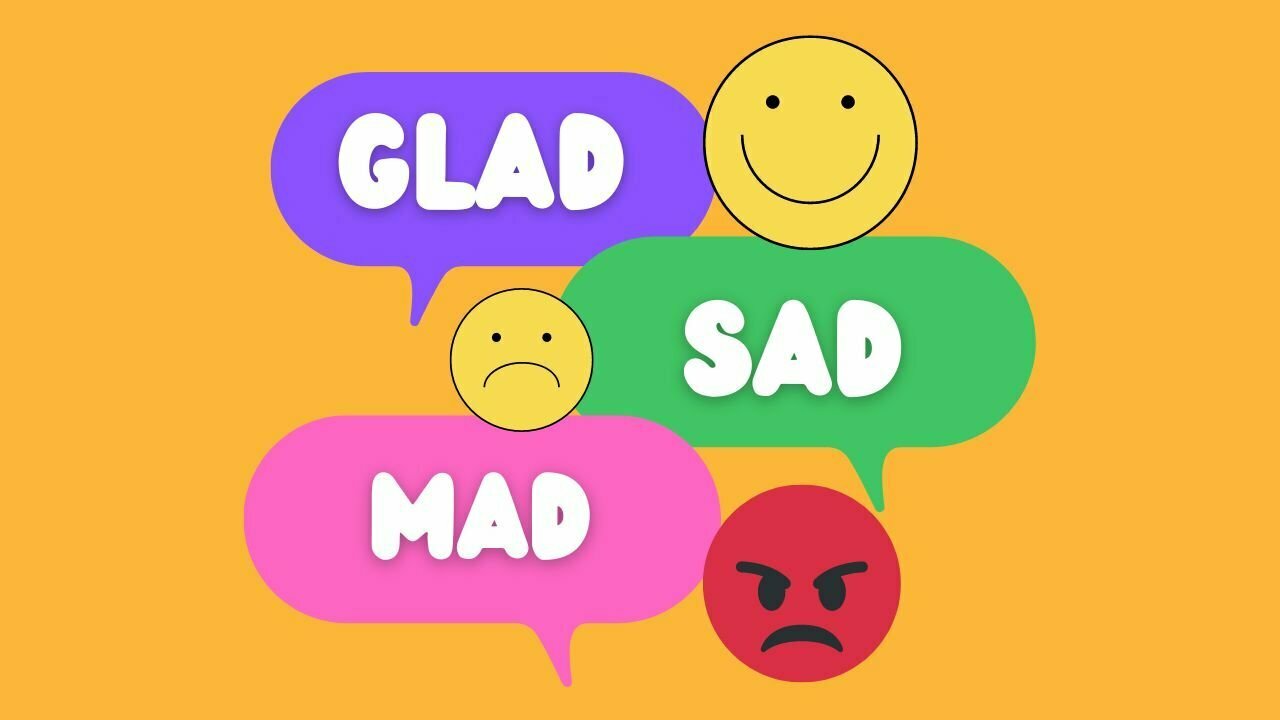
Mad Sad Glad Retrospectives User Story Map for Jira
Among the many [retro formats], the mad, sad glad retro allows your members to vent their feelings collectively, by stating what made them mad, sad, or glad after a sprint. It has an action-oriented approach and channels the teamwork adequately towards a major change or shift in the organization. Mad Sad Glad Retro Basics

The Mad, Sad, Glad retrospective Free template & guide
Use the Mad Sad Glad retrospective to check on your teammates' emotional wellbeing and discover ways to improve it. This technique will allow you to build a more positive team dynamic that will improve communication and increase productivity in the long run! Launch Retrospective. Mad Sad Glad is an Agile retro format that allows teams to.
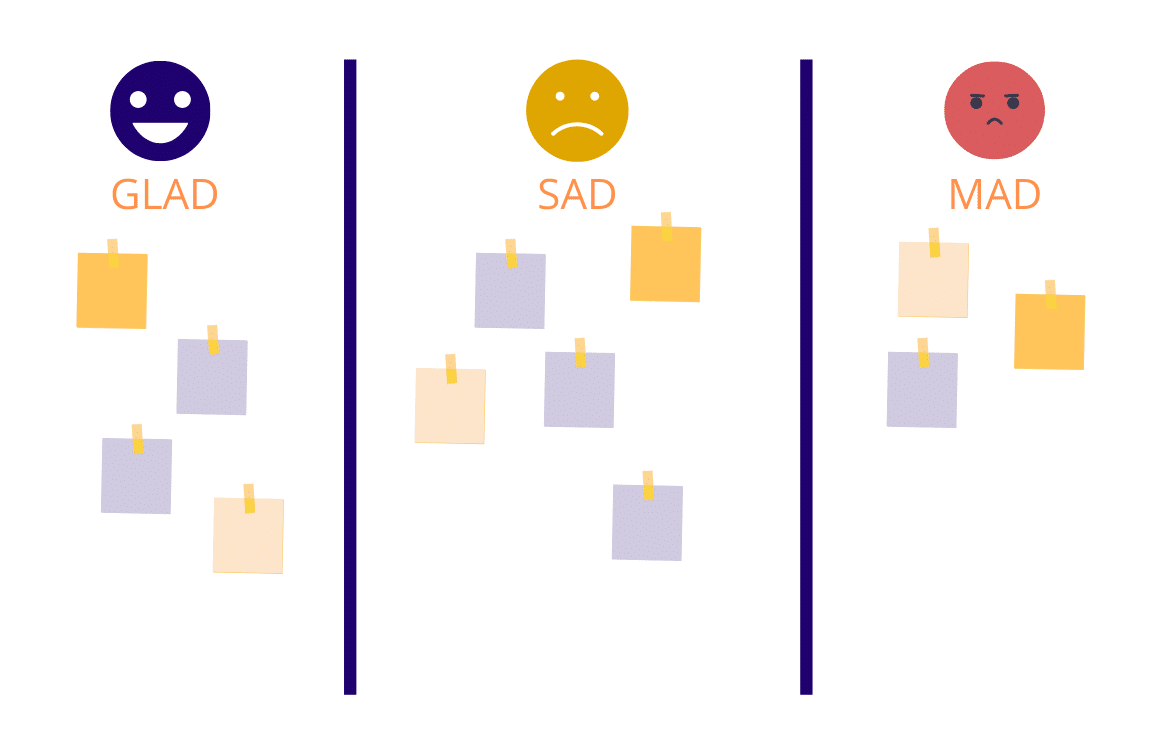
Agile retrospective the endofsprint meeting Beekast
The Mad Glad Sad Retrospective is a format to gather data in the Scrum Retrospective meeting. Here I am going to explain how you can use the Mad Glad Sad activity in your Retrospective meeting. I will describe in detail in which situations you should use it, how you introduce it to your team and what pitfalls you should look out for.
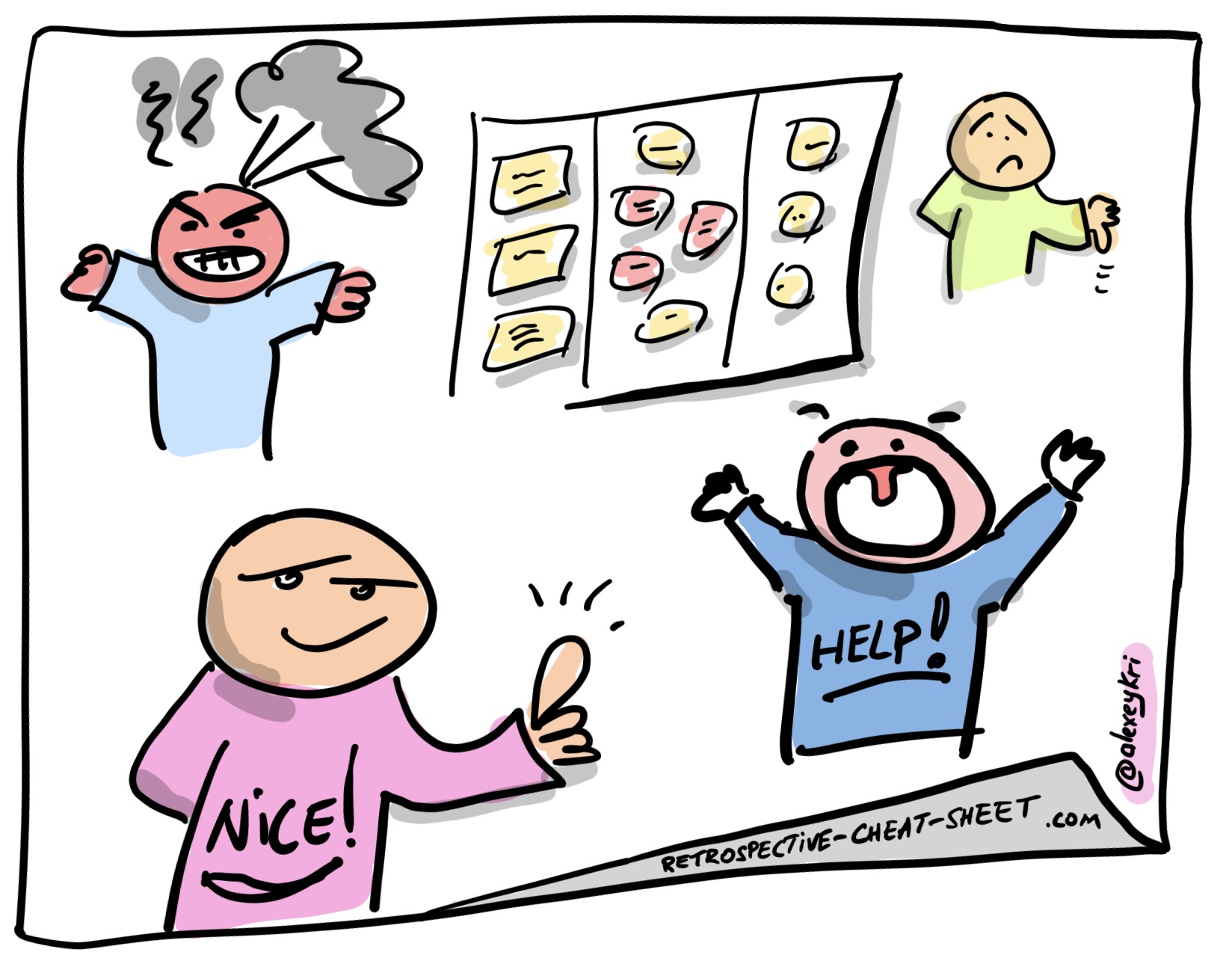
Retrospective Kickstarter Mad Sad Glad Afraid Agile and Scrum Training in Europe
The mad sad glad retrospective is a format for gathering data during the sprint retrospective ceremony, which is the final ceremony of the Scrum process. During the sprint retrospective, the Scrum team reviews what went down during the previous sprint to determine what can be improved in subsequent sprints.